- by Majid Jahangir
- November 7, 2024
Choosing the perfect engagement ring is a significant decision. It’s not just about the gemstone.
The metal used for the ring plays a crucial role too. It affects the ring’s durability, appearance, and cost.
This guide will explore the various metal options for engagement rings. We’ll delve into the properties and benefits of each metal type.
From the timeless appeal of gold to the premium allure of platinum, we’ll cover it all. We’ll also discuss affordable options like silver and emerging favorites like palladium.
But that’s not all. We’ll also consider alternative metals like tungsten and titanium.
By the end of this guide, you’ll have a comprehensive understanding of engagement ring metals. You’ll be equipped to make an informed choice that suits your style, budget, and lifestyle.
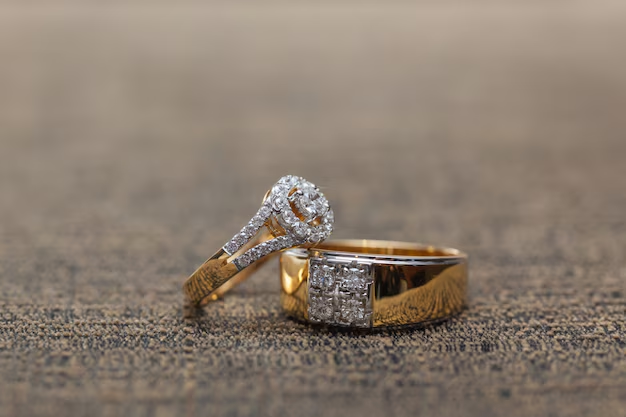
Understanding Engagement Ring Metals
Engagement ring metals offer a variety of choices, each bringing distinct characteristics.
Selecting the right metal is essential for achieving a balance between beauty and function.
Let’s explore popular ring metal options and what makes each unique.
Considerations when choosing include durability, aesthetics, and personal significance.
- Gold: Offers traditional beauty in yellow, white, and rose hues.
- Platinum: Known for its durability and hypoallergenic properties.
- Palladium: A rising choice offering platinum-like qualities at a lower cost.
- Silver and Sterling Silver: Provide affordable elegance but need more maintenance.
- Alternative Metals: Tungsten and titanium offer modern appeal and lightweight nature.
Now, let’s dive deeper into each of these metals, starting with the ever-popular gold.
Gold: A Timeless Choice
Gold remains a classic choice for engagement rings.
Its versatility is showcased in yellow, white, and rose gold options. Each offers a distinct charm, perfect for varied tastes.
Gold’s durability is determined by its karat rating.
Higher karats mean purer gold but can be softer. Lower karats increase strength with alloy mixtures.
Despite its softness, gold is favored for its malleability and beauty.
Its warm tones have long symbolized prosperity and warmth in engagement rings.
Today’s trends often favor mixing gold shades for a modern touch.
Mixed metals offer unique style without losing gold’s traditional charm.
Whether traditional yellow or contemporary rose, gold remains a beloved choice.
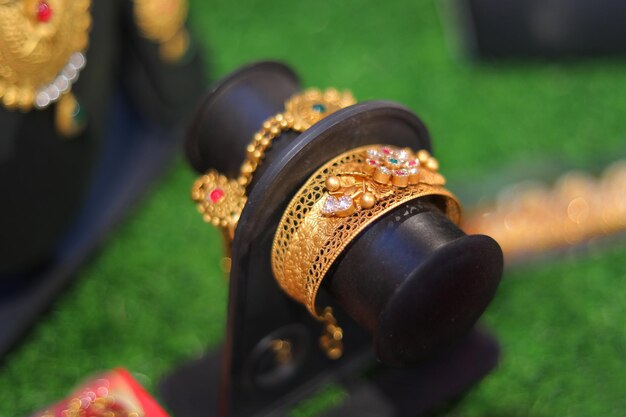
Platinum: The Premium Standard
Platinum stands as the premium choice among engagement ring metals.
Known for exceptional durability, it’s a popular option for secure gemstone settings.
This dense metal is heavier than others, imparting a luxurious feel.
Its natural white hue complements a gemstone’s brilliance without extra plating.
Platinum’s hypoallergenic nature makes it ideal for those with sensitive skin.
It resists tarnish, keeping its brilliant shine over time.
However, its quality comes at a price. Platinum is generally more expensive than gold.
Though costly, many feel its strength and beauty justify the investment.
Platinum rings offer a classic allure that’s hard to match.
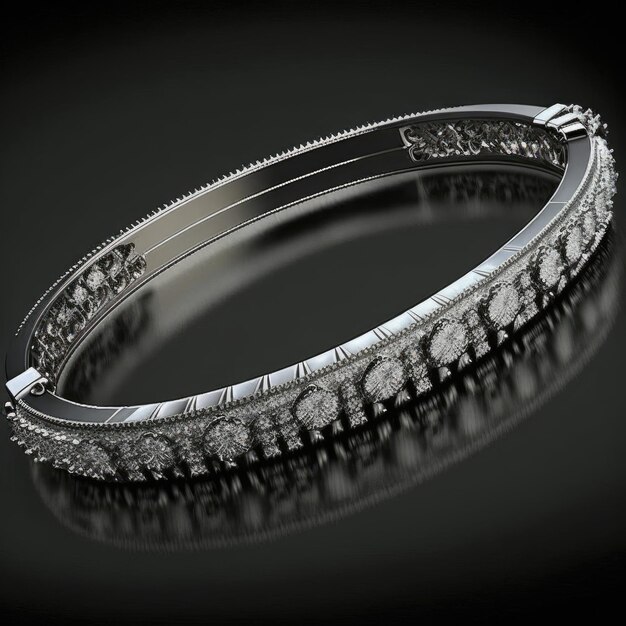
Palladium: The Rising Star
Palladium is gaining recognition as a practical alternative to platinum.
Lightweight yet strong, it shares many qualities with platinum, including a white finish.
While similar in appearance and function, palladium is more affordable than platinum.
It’s resistant to tarnish, making maintenance easy with minimal effort.
Palladium is also hypoallergenic, offering comfort for sensitive skin types.
While not as well-known, it’s becoming a favored choice for budget-conscious couples.
Its rising popularity offers elegant beauty without platinum’s higher price.
Palladium embodies the perfect balance between cost and luxury.
Silver and Sterling Silver: Affordable Elegance
Silver is an accessible and beautiful choice for engagement rings.
With its naturally bright sheen, silver offers a classic look for many.
Sterling silver, an alloy of silver and other metals, adds strength to pure silver.
Despite its appeal, silver is softer and prone to scratches and tarnish.
Engagement rings made of silver require more care and regular maintenance.
Yet, they remain a popular choice for those on a budget or seeking minimalist elegance.
Their affordability makes them perfect for temporary or placeholder rings.
Silver’s timeless allure is unmatched in affordable ring options.
Alternative Metals: Tungsten and Titanium
Modern couples increasingly favor alternative metals for their uniqueness and practicality.
Tungsten carbide rings boast remarkable hardness and scratch resistance.
Ideal for active lifestyles, tungsten offers durability without sacrificing style.
However, tungsten cannot be resized, so correct sizing is essential.
Titanium, another popular choice, is prized for its strength and lightweight feel.
It’s hypoallergenic, suiting those with skin sensitivities while providing modern aesthetics.
Both metals often feature in non-traditional, contemporary ring designs.
Offering exceptional durability, alternative metals cater to those desiring something distinct.
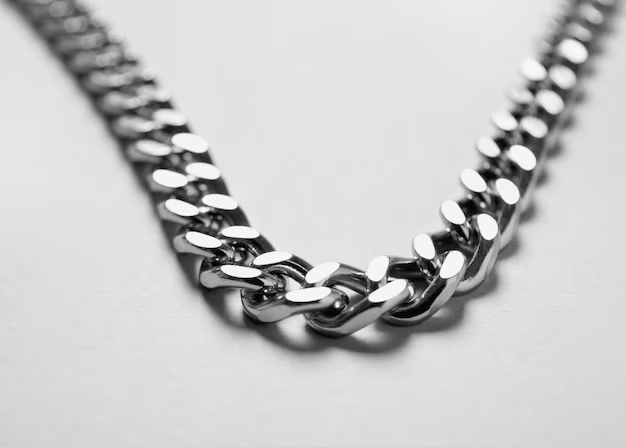
Factors to Consider When Choosing a Metal
Selecting the perfect metal for an engagement ring involves several key factors. These elements determine not only the ring’s appearance but also its practicality. Here are some critical aspects to keep in mind:
- Durability: How well does the metal withstand daily wear?
- Maintenance: What level of care does the metal require over time?
- Lifestyle: Does the metal suit your daily activities and occupation?
- Allergies: Is the metal hypoallergenic and safe for sensitive skin?
- Budget: How does the cost align with your financial plan?
- Aesthetics: Does the metal fit your design preferences and style?
Let’s delve deeper into each consideration to guide you in making an informed choice.
Durability and Maintenance
Durability is crucial in choosing an engagement ring metal. Strong metals like platinum and titanium resist wear and tear beautifully. They maintain their form and shine with minimal upkeep.
Gold, especially higher karat options, is softer and can scratch easily. It requires more careful handling. Regular cleaning keeps its luster.
Palladium and silver need consistent care to avoid tarnish. Their maintenance involves polishing to maintain their appearance. Understanding the balance between durability and ease of care is vital. Select a metal that aligns with your lifestyle and maintenance willingness.
Lifestyle and Occupation
Your daily activities impact the best metal choice. For active lifestyles, metals like tungsten or titanium are ideal. Their toughness withstands physical demands without damage.
Office environments allow for more delicate options. Gold or silver can work well when there’s limited risk of wear.
Occupation-specific needs also matter. Professionals in creative fields might prefer something unique and stylish, like mixed metals. Consider how your lifestyle dictates practical needs versus aesthetic desires.
Allergies and Skin Sensitivity
Consider skin reactions to metals when selecting an engagement ring. Hypoallergenic metals like platinum and titanium offer comfort without irritation.
Nickel, often found in gold alloys, can cause reactions. Those with sensitivities should avoid it.
Palladium is another hypoallergenic option, ensuring peace of mind and wearing comfort. Choose a metal that eliminates concerns about skin issues.
Budget and Cost Considerations
Budget plays a significant role in choosing engagement ring metals. Platinum, while luxurious, is often pricier than gold. It caters to those seeking premium qualities.
Gold offers versatility across price ranges, with 14k often more affordable than 18k. Silver remains the most budget-friendly choice, appealing for those prioritizing cost.
Consider the long-term value and maintenance costs. Weigh up between initial expense and lasting satisfaction.
Aesthetic and Design Preferences
A ring’s aesthetics are deeply influenced by the chosen metal. Gold offers versatility in colors, fitting various skin tones and personal styles.
Platinum’s natural white sheen enhances gemstone brilliance, ideal for classic designs. Silver’s cool elegance complements minimalist rings beautifully.
Consider mixed metals for a unique and modern look. Choose a metal that reflects your personal style and complements the overall ring design.
The Impact of Metal Choice on Ring Design
The metal chosen for an engagement ring profoundly influences its overall design. It can enhance or diminish its visual appeal and functionality. The metal’s color, weight, and finish all contribute to the final aesthetic and practical aspects.
Different metals offer distinct visual qualities. Gold is known for its warm hues, from yellow to rose, which can create a classic or romantic look. Platinum, with its bright, white sheen, highlights gemstones, adding to their sparkle.
Each metal’s weight and density affect the ring’s feel when worn. Heavier metals like platinum provide a substantial, luxurious weight, while lightweight options like titanium offer modern comfort.
The finish of the metal plays a key role, too. Matte finishes provide understated elegance, while polished metals deliver a gleaming look. Engravings and textures can add personalized touches.
Lastly, metal choice can elevate the ring’s uniqueness. Mixed metals present opportunities for creative and bespoke designs, personalizing an engagement ring beyond traditional norms.
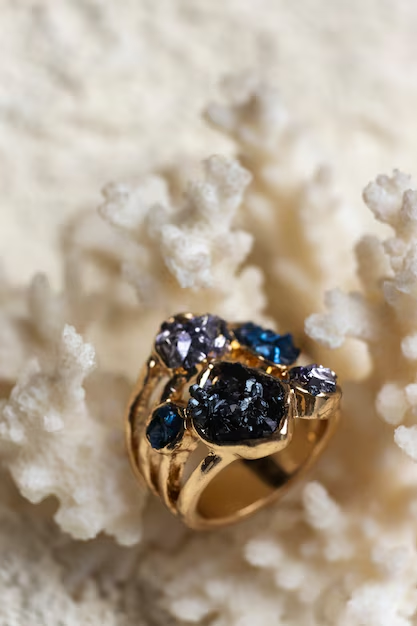
Color and Complexion Matching
The interaction between metal color and skin tone can enhance the ring’s allure. Yellow gold pairs beautifully with warmer skin tones, providing a harmonious appearance. It radiates richness and complements golden undertones in the skin.
White metals, such as platinum and white gold, work best with cooler skin tones. Their neutral luster highlights the vibrance in fairer complexions, creating striking contrasts.
Rose gold’s blush hue offers versatility, suiting a variety of skin tones. Its romantic tint adds a unique charm, appealing to those desiring something less conventional. Selecting a metal that complements the wearer’s complexion can elevate the ring’s beauty.
Gemstone Setting Compatibility
Choosing the right metal is crucial for setting gemstones in engagement rings. Platinum’s strength secures stones well, reducing the chance of loss. Its neutral tone amplifies the brilliance of diamonds, making it a popular choice.
Gold, particularly white gold, also supports gemstone settings effectively. It offers a bright backdrop that enhances the visual impact of colored stones. However, yellow and rose gold can clash with certain gemstones, creating a less cohesive look.
For softer stones, consider metals that offer protection like bezel settings in platinum or titanium. Ensuring metal-gemstone compatibility guarantees both aesthetic appeal and structural security, enhancing the ring’s elegance and durability.
Mixed Metals and Unique Combinations
Mixed metal designs offer a contemporary twist for engagement rings. Combining different metals allows for a customized and modern aesthetic, merging traditional elements with new design trends.
Alternating metal colors create visual contrast and intrigue. Pairing rose gold with white gold introduces warmth while retaining a crisp elegance. Mixing metals can also reflect personal stories or shared experiences, making the ring uniquely significant.
Two-tone rings can highlight specific design features or gemstone brilliance. The versatility in mixed metal rings allows for expression of personal taste, offering a distinctive and individualized engagement ring style.
Ethical and Environmental Considerations
When selecting a metal for an engagement ring, ethical and environmental concerns are increasingly important. Consumers today are more aware of the impact of their purchases on the planet. Understanding the sourcing and sustainability practices behind engagement ring metals can guide more responsible choices.
The production of traditional metals involves substantial environmental costs. Mining often leads to habitat destruction and significant carbon emissions. Thus, looking for alternatives and making informed decisions can mitigate these impacts.
Many jewelers now offer ethically sourced materials. By choosing responsibly produced metals, you contribute to ethical labor practices. This ensures fair wages and safer working conditions for miners and workers.
Additionally, some metals offer the chance to support sustainable practices. Opting for metals that emphasize environmental consciousness adds value beyond aesthetics. This thoughtful selection can reflect the values of both the giver and the receiver.
Recycled Metals and Sustainability
Recycled metals present a sustainable alternative for engagement ring enthusiasts. Utilizing recycled metals reduces the need for new mining and its associated environmental damage. These metals are often indistinguishable from newly mined ones, maintaining high quality.
Choosing a ring made from recycled materials supports a circular economy. It emphasizes the importance of reusing resources, minimizing waste. Many jewelers now offer collections specifically designed with recycled metals, catering to environmentally conscious consumers.
Moreover, using recycled metals can add an emotional layer to your purchase. Knowing that the ring minimizes its ecological footprint gives it a unique ethical sentiment. It becomes a symbol not only of love but also of responsibility toward our planet.
Ethical Sourcing and Fair Trade Options
Ethical sourcing ensures that the materials in your engagement ring support fair labor practices. By choosing fair trade metals, consumers contribute to improving the quality of life for workers. This supports community development and ethical mining operations around the world.
Fair trade metals guarantee that no exploitative practices were involved in their production. They offer transparency, providing information about the metal’s origins and the people it supports. This transparency empowers consumers to make informed and conscientious decisions.
Beyond ethical benefits, choosing fair trade metals supports storytelling in the jewelry. The background and journey of the materials add depth to the ring’s significance. Ethical sourcing transforms a simple object into a testament of love for both people and the planet.
Caring for Your Engagement Ring Metal
Proper care ensures the longevity and beauty of your engagement ring metal. Regular attention helps protect it from daily wear and tear. This care keeps the ring looking its best over the years.
Different metals require unique maintenance approaches. Understanding the specific needs of your metal type is crucial. Whether it’s preventing scratches or maintaining shine, tailored care can make a difference.
Investing time in upkeep helps preserve the sentimental value of the ring. The joy of having a pristine ring can enhance your enjoyment. It signifies a commitment to the enduring symbol of your relationship.
Regular Maintenance Tips
Routine maintenance is essential for keeping engagement rings pristine. Regularly cleaning the ring can help maintain its sparkle. Use mild soap and warm water, scrubbing gently with a soft brush.
Periodically checking the ring for loose stones or wear can prevent damage. Visiting a jeweler for professional cleaning and inspection every year is beneficial. This helps detect issues early, ensuring any problems are addressed swiftly.
Avoid exposure to harsh chemicals, as they can affect the metal’s finish. Remove the ring when engaging in vigorous activities or applying lotions. Taking these small precautions ensures the ring stays beautiful and intact.
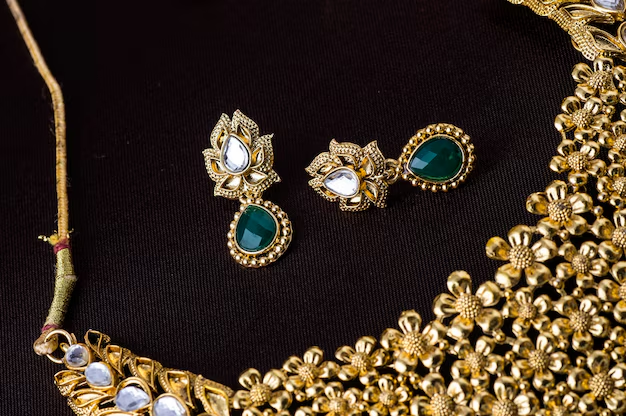
Long-Term Preservation Strategies
For long-term preservation, thoughtful storage of your engagement ring is key. Keeping your ring in a soft, lined jewelry box when not in use can prevent scratches. Consider storing it separately to avoid damage from contact with other jewelry.
Protecting the ring from environmental stressors, like extreme heat or cold, can extend its life. These conditions can cause metal expansion or contraction, affecting fit and stability. Keeping the ring dry and clean helps prevent tarnish or corrosion.
Lastly, consider investing in a quality insurance policy for peace of mind. This covers potential losses and damage, ensuring your investment is safeguarded. Preserving your engagement ring for future generations adds to its legacy and sentiment.
Conclusion: Making Your Metal Choice
Selecting the right metal for your engagement ring combines practicality with personal expression. Each metal offers distinct benefits and considerations. Understanding these elements can guide you to a choice that fits both your lifestyle and style preferences.
Consider factors such as durability, aesthetics, and ethical values when making your decision. Whether you prefer the timeless elegance of gold or the modern allure of titanium, your ring should reflect your unique love story. With careful thought, you’ll choose a metal that not only enhances your ring’s beauty but also carries lasting significance.
